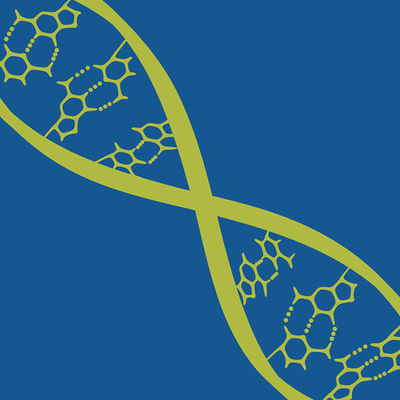预约演示
更新于:2025-05-07
Primary Effusion Lymphoma
原发性渗出性淋巴瘤
更新于:2025-05-07
基本信息
别名 Body cavity-based lymphoma、Effusion Lymphoma, Primary、Effusion Lymphomas, Primary + [20] |
简介 A rare neoplasm of large B-cells usually presenting as serious effusions without detectable tumor masses. The most common sites of involvement are the pleural, pericardial, and peritoneal cavities. It is associated with HUMAN HERPESVIRUS 8, most often occurring in the setting of immunodeficiency. |
关联
8
项与 原发性渗出性淋巴瘤 相关的药物靶点 |
作用机制 VEGF-A抑制剂 [+1] |
原研机构 |
最高研发阶段批准上市 |
首次获批国家/地区 美国 |
首次获批日期2004-02-26 |
靶点 |
作用机制 CD20抑制剂 [+3] |
在研机构 |
原研机构 |
最高研发阶段批准上市 |
首次获批国家/地区 美国 |
首次获批日期1997-11-26 |
靶点 |
作用机制 DNA抑制剂 |
最高研发阶段批准上市 |
首次获批国家/地区 美国 |
首次获批日期1959-11-16 |
15
项与 原发性渗出性淋巴瘤 相关的临床试验NCT05907759
A Phase II Study of Daratumumab for Relapsed/Refractory Primary Effusion Lymphoma and Multicentric Castleman Disease
Background:
Primary effusion lymphoma (PEL) is an aggressive form of cancer that affects cells in the immune system and lymph nodes. How PEL develops is not well understood, and this disease does not respond well to standard treatments for other types of lymphomas.
Objective:
To test a drug treatment (daratumumab SC) in people with PEL.
Eligibility:
People aged 18 and older with PEL. Their PEL must have failed to respond to therapy or they must be unable to receive standard treatment for the disease.
Design:
Participants will be screened. They will have a physical exam with blood tests. They will have imaging scans and tests of their heart and lung function. They may need to have a biopsy: tissue or fluid will be collected. They will have an eye exam.
Daratumumab SC is given as an injection into the fat under the skin in the abdomen. This takes 3 to 5 minutes. Participants will receive the treatment once a week for 8 weeks; then every 2 weeks for 16 weeks; then every 4 weeks for up to 24 months.
Participants will have other tests during the study period. These may include lumbar punctures: A needle will be inserted between the bones of the spine to draw some fluid from the area around the spinal cord. Participants may also have a thoracentesis: A needle or plastic tube will be inserted into the space around the lungs to withdraw fluid. Participants will have more imaging scans and blood tests.
Follow-up visits will continue after treatment ends. Participants will be in the study for up to 5 years.
Primary effusion lymphoma (PEL) is an aggressive form of cancer that affects cells in the immune system and lymph nodes. How PEL develops is not well understood, and this disease does not respond well to standard treatments for other types of lymphomas.
Objective:
To test a drug treatment (daratumumab SC) in people with PEL.
Eligibility:
People aged 18 and older with PEL. Their PEL must have failed to respond to therapy or they must be unable to receive standard treatment for the disease.
Design:
Participants will be screened. They will have a physical exam with blood tests. They will have imaging scans and tests of their heart and lung function. They may need to have a biopsy: tissue or fluid will be collected. They will have an eye exam.
Daratumumab SC is given as an injection into the fat under the skin in the abdomen. This takes 3 to 5 minutes. Participants will receive the treatment once a week for 8 weeks; then every 2 weeks for 16 weeks; then every 4 weeks for up to 24 months.
Participants will have other tests during the study period. These may include lumbar punctures: A needle will be inserted between the bones of the spine to draw some fluid from the area around the spinal cord. Participants may also have a thoracentesis: A needle or plastic tube will be inserted into the space around the lungs to withdraw fluid. Participants will have more imaging scans and blood tests.
Follow-up visits will continue after treatment ends. Participants will be in the study for up to 5 years.
开始日期2024-07-10 |
申办/合作机构 |
CTIS2023-507213-97-00
First in human study of the infusion of ARI0003 cells in relapsed/refractory to treatment B-cell aggressive lymphoma
开始日期2024-05-27 |
申办/合作机构- |
NCT05544019
A Phase 1, Open-Label, Multicenter, Dose Escalation Study of SGR-1505 as Monotherapy in Subjects With Mature B-Cell Malignancies
The purpose of this study is to evaluate safety and tolerability and to determine the maximum tolerated dose (MTD) or maximum administered dose (MAD) and/or recommended dose (RD) of SGR-1505.
开始日期2023-04-10 |
申办/合作机构 |
100 项与 原发性渗出性淋巴瘤 相关的临床结果
登录后查看更多信息
100 项与 原发性渗出性淋巴瘤 相关的转化医学
登录后查看更多信息
0 项与 原发性渗出性淋巴瘤 相关的专利(医药)
登录后查看更多信息
2,027
项与 原发性渗出性淋巴瘤 相关的文献(医药)2025-12-01·Rice
Elite Alleles of EPE1 Identified via Genome-wide Association Studies Increase Panicle Elongation Length in Rice
Article
作者: Hai, Mei ; Liu, Erbao ; Ang, Yang ; Chang, Yinping ; Zhang, Yanan ; Du, Mingyu ; Zhao, Yingying ; Huang, Tao ; Liu, Zhengbo ; Cheng, Xianping ; Sun, Hao ; Sun, Jinghan ; Yao, Qiqi ; Li, Tianhu
2025-04-03·Expert Review of Anticancer Therapy
Primary effusion lymphoma: therapeutic strategies targeting viral and cellular mechanisms
Review
作者: Abou Merhi, Raghida ; Faddoul, Nouria ; Abou Staiteieh, Soumaiah ; Houshaymi, Bilal ; Darwiche, Nadine ; Hayar, Berthe
2025-04-01·Actas Dermo-Sifiliográficas
[Translated article] An Update on EBV-related Cutaneous Lymphoproliferative Disorders: a Systematic Review
Review
作者: García-García, M ; Prieto-Torres, L ; García-González, S
3
项与 原发性渗出性淋巴瘤 相关的新闻(医药)2024-04-20
2024年4月16日,武汉大学病毒学国家重点实验室张军杰教授研究组在国际学术期刊PLOS Pathogens上在线发表题为“Palmitoylation of KSHV pORF55 is required for Golgi localization and efficient progeny virion production”的研究论文,揭示了卡波氏肉瘤相关疱疹病毒(KSHV)病毒蛋白ORF55在裂解复制中发挥的关键作用。KSHV是一种人类肿瘤疱疹病毒,其感染可引起卡波氏肉瘤、原发性渗出性淋巴瘤等多种恶性肿瘤。KSHV编码超过80种病毒蛋白,其中许多病毒蛋白在病毒复制中的作用尚不清楚,特别是对于病毒组装释放过程,我们更是知之甚少。在疱疹病毒组装的过程中,需要进行两次囊膜化。在细胞核中组装好的病毒衣壳与细胞核膜相互作用,完成第一次囊膜包被和去包被,然后进入细胞质进行二次包膜。对于KSHV病毒蛋白如何调控二次包膜进而促进病毒组装,我们的认识还非常有限。在该研究中,作者们针对研究较少的裂解期病毒基因进行了小规模的CRISPR敲除筛选,发现ORF55敲除极大地抑制了子代病毒粒子的产生。作者们通过人工染色体重组技术获得了ORF55敲除病毒,发现ORF55敲除病毒诱导裂解复制后产生的子代病毒粒子数量同样显著降低,但病毒转录、复制水平以及即早期和早期蛋白表达并不受影响,提示ORF55在病毒裂解复制后期发挥作用。进一步研究发现,ORF55定位于细胞的高尔基体,且ORF55 N末端的第10位和第11位半胱氨酸的棕榈酰化对其高尔基体定位至关重要。当这两个半胱氨酸中的任意一个突变后,ORF55均丧失其高尔基体定位,相应突变病毒的子代病毒粒子数量也显著降低。通过电镜观察病毒形态发现,在ORF55 KO或棕榈酰化位点突变后,病毒在组装过程中不能形成二次包膜。有趣的是,当在ORF55棕榈酰化位点突变体前面融合表达一段高尔基体定位序列,人为回复其高尔基体定位,可以完全回复子代感染性病毒粒子水平,表明ORF55 N末端棕榈酰化导致的高尔基体定位对其发挥促进组装释放的作用至关重要。进一步研究发现,ORF55棕榈酰化位点突变体的稳定性明显下降,经由蛋白酶体降解。此外,无论ORF55是否定位于高尔基体,其泛素化水平都很高,表明ORF55在细胞内高度泛素化,而其高尔基体定位有助于稳定ORF55,使其能够发挥促进病毒组装的作用。该研究不仅揭示了肿瘤疱疹病毒KSHV病毒蛋白ORF55在病毒组装过程中的关键作用,还提示了特异性抑制病毒蛋白的棕榈酰化可能是一种有效的抗病毒治疗策略。通过阻断ORF55的棕榈酰化,可以干扰病毒的组装和释放过程,为开发新型的抗病毒药物提供了理论基础。武汉大学医学研究院2021级博士研究生周亚茹为该论文的第一作者,武汉大学医学研究院、免疫与代谢前沿科学中心、病毒学国家重点实验室张军杰教授为该论文的通讯作者。该研究的合作者包括武汉大学病毒学国家重点实验室蓝柯教授和白磊博士,武汉大学医学研究院蒋白山教授,中国科学院武汉病毒所罗敏华研究员和汕头大学覃青松教授。研究获得国家重点研发计划、国家自然科学基金、中央高校基本科研业务费专项资金及病毒学国家重点实验室自主科研项目等资助。示意图:KSHV病毒蛋白ORF55棕榈酰化修饰后定位于高尔基体,促进病毒的二次包膜组装过程。当ORF55不能被棕榈酰化修饰时,失去了定位于高尔基体的能力,而定位于细胞质,同时受到高度泛素化修饰,进入蛋白酶体降解。论文链接:https://journals.plos.org/plospathogens/article?id=10.1371/journal.ppat.1012141来源:病毒学国家重点实验室识别微信二维码,添加生物制品圈小编,符合条件者即可加入生物制品微信群!请注明:姓名+研究方向!版权声明本公众号所有转载文章系出于传递更多信息之目的,且明确注明来源和作者,不希望被转载的媒体或个人可与我们联系(cbplib@163.com),我们将立即进行删除处理。所有文章仅代表作者观点,不代表本站立场。
临床1期
2024-03-01
Researchers have discovered a key mechanism used by Kaposi's sarcoma-associated herpesvirus (KSHV), also known as human herpesvirus 8 (HHV8), to induce cancer. The research points to effective new treatment options for KSHV-associated cancers, including Kaposi's sarcoma, primary effusion lymphoma, and HHV8-associated multicentric Castleman disease.
Cleveland Clinic researchers have discovered a key mechanism used by Kaposi's sarcoma-associated herpesvirus (KSHV), also known as human herpesvirus 8 (HHV8), to induce cancer. The research points to effective new treatment options for KSHV-associated cancers, including Kaposi's sarcoma, primary effusion lymphoma, and HHV8-associated multicentric Castleman disease.
"Our findings have significant implications: viruses cause between 10% to 20% of cancers worldwide, a number that is constantly increasing as new discoveries are made. Treating virus-induced cancers with standard cancer therapies can help shrink tumors that are already there, but it doesn't fix the underlying problem of the virus," said Jun Zhao, Ph.D., of Cleveland Clinic Florida Research & Innovation Center. "Understanding how pathogens transform a healthy cell into a cancer cell uncovers exploitable vulnerabilities and allows us to make and repurpose existing drugs that can effectively treat virus-associated malignancies."
The Nature Communicationsstudy, led by Dr. Zhao, reveals that KSHV manipulates two human enzymes called CDK6 and CAD to reshape the way human cells produce new nucleotides -- the building blocks of DNA and RNA -- and process glucose. The changes to how infected cells grow and how KSHV persists put cells at a much higher risk of forming tumors and play a crucial role in causing cancer.
The team showed the virus activates a specific pathway driving cell metabolism and proliferation. Inhibiting this process with existing FDA-approved breast cancer drugs reduced KSHV replication, blocked lymphoma progression and shrunk existing tumors in preclinical models.
Like other herpesviruses, KSHV often has no symptoms initially and remains in the body after primary infection. The virus stays dormant, suppressed by the immune system. However, KSHV can reactivate when immunity is weakened -- as in older people, those with HIV/AIDS, and transplant recipients. In these high-risk groups, the now active virus can trigger aggressive cancers.
KSHV-induced cancers are fast-acting, aggressive and difficult to treat. An estimated 10% of people in North America and Northern Europe have KSHV, but this ranges throughout the globe. More than 50% of individuals in parts of Northen Africa are estimated to have the virus. Experts estimate these rates are higher, as KSHV often goes undiagnosed because of lack of symptoms. These findings have implications that reach past KSHV; researchers can apply knowledge about KSHV to other cancer-associated viruses that might use the same process to cause cancer.
To understand the cells' metabolic processes to uncover the virus's vulnerabilities, Dr. Zhao collaborated with Michaela Gack, Ph.D., Scientific Director of the Florida Research & Innovation Center.
Rapidly replicating cancer cells reprogram metabolism to fuel growth. Meanwhile, most viruses cannot produce energy or necessary molecules on their own, so they rely on human cells to do the work for them. The team found that the virus takes over the host protein CDK6 and CAD, causing the infected cells to produce extra metabolites, which allows faster replication of the virus and an uncontrolled proliferation of the cells.
The research team treated pre-clinical models with a CDK6-blocking drug, Palbociclib, an FDA-approved breast cancer medication, as well as a compound targeting CAD. They saw significant decreases in tumor size and increases in cancer survival rates: most tumors virtually disappeared after about a month of treatment, and remaining tumors shrank around 80%. Survival increased to 100% for selected lymphoma cell lines.
Dr. Zhao and his team are working to better understand the connections among KSHV, CDK6/CAD pathway, and cancer formation. With the knowledge they obtain, they plan to implement and refine their experimental drug combinations for clinical trials.
"Cellular metabolism could be hijacked by both viruses and cancers for pathogenesis," said Dr. Zhao. "By investigating these metabolic rewiring mechanisms, we aim to find the Achilles' heel of cancer-causing viruses and non-viral cancers. I'm excited to see what the future of this work holds."
临床研究
2024-01-15
2024年1月12日,武汉大学病毒学国家重点实验室张军杰教授课题组在国际学术期刊PLOS Pathogens上在线发表题为“Non-canonical regulation of the reactivation of an oncogenic herpesvirus by the OTUD4-USP7 deubiquitinases”的研究论文,揭示了去泛素化酶复合体OTUD4-USP7在肿瘤疱疹病毒裂解再激活中发挥的关键作用。卡波氏肉瘤相关疱疹病毒(KSHV)是一种人类肿瘤疱疹病毒,其感染可引起卡波氏肉瘤、原发性渗出性淋巴瘤等多种恶性肿瘤。KSHV的生命周期分为潜伏感染和裂解复制,从潜伏感染到裂解复制的转换过程称为裂解再激活,这一过程在病毒复制及引起肿瘤发生都发挥了关键作用。KSHV 病毒基因ORF50编码的病毒蛋白RTA在裂解再激活中发挥分子开关的作用。此前的研究表明RTA的稳定性受到泛素化修饰调控,然而去泛素化是否调控RTA及KSHV裂解再激活尚不明确。在该研究中,作者们通过串联亲和纯化鉴定RTA的结合蛋白,发现去泛素化酶OTUD4与RTA相互作用。进一步研究表明,OTUD4能够导致RTA去泛素化从而稳定RTA,促进KSHV裂解再激活。令人意外的是,OTUD4丧失去泛素化酶活性的突变体同样能导致RTA去泛素化并稳定RTA,提示OTUD4可能扮演了接头蛋白的角色,通过结合另外一个去泛素化酶发挥作用。作者们筛选了OTUD4结合的去泛素化酶,发现去泛素化酶USP7与OTUD4结合,实验证实USP7也在KSHV裂解再激活中发挥了关键作用。进一步的研究证实RTA通过结合OTUD4进而招募USP7,USP7直接去泛素化RTA,从而稳定RTA,促进病毒复制。该研究不仅揭示了肿瘤疱疹病毒KSHV通过劫持OTUD4-USP7去泛素化酶复合体促进裂解再激活的机制,也为治疗相关感染引发的恶性肿瘤提供了新的靶点。武汉大学医学研究院/免疫与代谢前沿科学中心/病毒学国家重点实验室张军杰教授为该论文的通讯作者,医学研究院2022级博士研究生王绍伟为该论文的第一作者,武汉大学口腔医学院和医学研究院联合培养博士后田学张为并列第一作者。该研究的合作者包括武汉大学病毒学国家重点实验室蓝柯教授和白磊博士,武汉大学医学研究院钟波教授和于可颖博士,武汉大学人民医院林丹丹教授,汕头大学覃青松教授及美国南加州大学Pinghui Feng教授。研究获得国家重点研发计划、国家自然科学基金、中央高校基本科研业务费专项资金及病毒学国家重点实验室自主科研项目等资助。示意图:KSHV RTA招募OTUD4-USP7复合体去泛素化稳定RTA,促进病毒复制。论文链接:https://journals.plos.org/plospathogens/article?id=10.1371/journal.ppat.1011943识别微信二维码,添加生物制品圈小编,符合条件者即可加入生物制品微信群!请注明:姓名+研究方向!版权声明本公众号所有转载文章系出于传递更多信息之目的,且明确注明来源和作者,不希望被转载的媒体或个人可与我们联系(cbplib@163.com),我们将立即进行删除处理。所有文章仅代表作者观点,不代表本站立场。
临床研究
分析
对领域进行一次全面的分析。
登录
或

生物医药百科问答
全新生物医药AI Agent 覆盖科研全链路,让突破性发现快人一步
立即开始免费试用!
智慧芽新药情报库是智慧芽专为生命科学人士构建的基于AI的创新药情报平台,助您全方位提升您的研发与决策效率。
立即开始数据试用!
智慧芽新药库数据也通过智慧芽数据服务平台,以API或者数据包形式对外开放,助您更加充分利用智慧芽新药情报信息。
生物序列数据库
生物药研发创新
免费使用
化学结构数据库
小分子化药研发创新
免费使用





